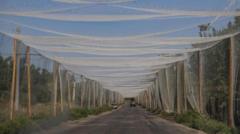Why is Donetsk Crucial to Ukraine's Defense?

This article delves into the significance of the Donetsk region in the ongoing conflict between Russia and Ukraine, highlighting the strategic and economic implications of territorial control. With Russia seeking to solidify its claims over Donetsk, we explore the potential consequences for both nations, including military losses, economic devastation, and the challenges of negotiating peace.
Last updated: 25 October 2023 (BST)
Key Takeaways
- Donetsk is critical for both military strategy and economic resources in Ukraine.
- Russia currently controls about 70% of the Donetsk region, including its capital.
- A ceasefire proposal from Russia could lead to significant territorial losses for Ukraine.
- Ukrainian forces have built extensive defensive structures in the region, known as the “fortress belt.”
- The topography of Donetsk poses challenges for Ukraine in defensive operations.
The Strategic Importance of Donetsk
The Donetsk region, an integral part of Ukraine's industrial heartland known as the Donbas, has been a focal point of conflict since 2014. Following Russia's annexation of Crimea, the war in eastern Ukraine has led to a protracted struggle for territorial control, particularly in Donetsk and neighbouring Luhansk. As of now, approximately 70% of Donetsk is under Russian control, a situation that poses a significant threat to Ukraine's sovereignty and security.
Territory and Population in Donetsk
As reported by various sources, Ukraine retains control over an estimated 6,600 square kilometres (2,548 square miles) within Donetsk. This area is home to around 250,000 people, with several major urban centres such as Kramatorsk, Slovyansk, Kostyantynivka, and Druzhkivka remaining under Ukrainian administration. Despite ongoing military operations, these cities are vital for Ukraine's economy, which has suffered dramatically due to the conflict.
The Economic Landscape
The economic implications of losing Donetsk are profound. Historically, the region has been a powerhouse for industries such as coal mining and metallurgy. However, the ongoing war has devastated infrastructure and disrupted economic activities. Dr Marnie Howlett from the University of Oxford highlights that the region's resources may remain inaccessible for a decade or more due to extensive landmines and destruction.
Defensive Infrastructure: The Fortress Belt
In response to the Russian advances, Ukraine has invested significantly in defensive measures, creating what is referred to as a "fortress belt" across western Donetsk. This fortification includes trenches, bunkers, minefields, anti-tank obstacles, and barbed wire, all designed to slow Russian advances and protect key urban centres.
The Institute for the Study of War (ISW) notes that these fortifications are crucial for Ukraine's efforts to defend this strategically important area. The construction of these defences reflects over a decade of preparation, aimed at establishing a resilient defensive posture against potential incursions.
Topographical Challenges
The topography of Donetsk further complicates the military situation. According to Nick Reynolds of the Royal United Services Institute (RUSI), the terrain offers both advantages and disadvantages. While certain high ground locations, such as Chasiv Yar, provide defensive opportunities, the general landscape tends to favour attackers.
Reynolds points out that, as the city of Donetsk is situated on elevated ground, advancing forces have a significant advantage in terms of visibility and artillery coordination. This geographical factor can complicate Ukrainian defensive operations by limiting their ability to respond effectively to Russian assaults.
The Ongoing Military Conflict
Recent intelligence assessments indicate that Russian forces have been intensifying their operations in western Donetsk. Despite the establishment of the fortress belt, Russian military efforts towards key locations such as Pokrovsk may require years to achieve substantial gains. The ongoing conflict along the 1,100 km front line has seen some of the most intense fighting this summer, highlighting the volatility of the situation.
Potential Outcomes of a Ceasefire
The prospect of a ceasefire raises several complex questions. Reports suggest that Russian President Vladimir Putin may be seeking to freeze the current front lines in exchange for Ukrainian withdrawal from western Donetsk. However, such a concession would not only involve territorial losses but also potentially set the stage for future aggressions, as Ukrainian President Volodymyr Zelensky has pointed out.
The implications of ceding territory could lead to a new wave of refugees and further destabilise the humanitarian situation in the region. Zelensky's administration has made it clear that any proposal for a ceasefire that demands territorial concessions will be firmly rejected, citing the risk of future conflicts springing from such an agreement.
The Role of International Support
International dynamics also play a significant role in this conflict. The United States and other allies have provided ongoing military and financial support to Ukraine. This backing is crucial as it strengthens Ukraine's position in negotiations and enhances their defensive capabilities. However, there are concerns regarding the sustainability of this support, especially in light of potential shifts in US political leadership.
Conclusion: The Future of Donetsk
The situation in Donetsk remains fluid and precarious. The region's strategic significance, coupled with the complexities of military operations and international relations, sets the stage for continued conflict. As both sides navigate the challenges of negotiation and warfare, the future of Donetsk will likely be a critical factor in shaping the broader outcome of the war.
What remains clear is that the struggle for Donetsk is about more than just territory; it reflects deep-seated national identities and aspirations. As the situation unfolds, the stakes continue to rise for both Russia and Ukraine, with repercussions that will echo far beyond the battlefield. #UkraineWar #Donetsk #PeaceNegotiations
FAQs
Why is Donetsk so important in the Ukraine conflict?
Donetsk is a crucial industrial area and holds significant strategic military value. Its loss could severely impact Ukraine’s economy and defensive capabilities.
What percentage of Donetsk does Russia currently control?
As of now, Russia controls approximately 70% of the Donetsk region, including its capital, which has significant implications for the ongoing conflict.
What is the fortress belt in Donetsk?
The fortress belt refers to the extensive network of defensive fortifications established by Ukraine in western Donetsk, aimed at repelling Russian attacks.
What are the potential consequences of a ceasefire?
A ceasefire could lead to significant territorial losses for Ukraine, potentially allowing Russia to solidify its claims and pose future threats to Ukrainian sovereignty.
How has the topography of Donetsk affected military operations?
The terrain in Donetsk generally favours attackers, making defensive operations more challenging for Ukrainian forces, particularly in high ground areas.
Published: 2025-08-20 17:28:11 | Category: technology



